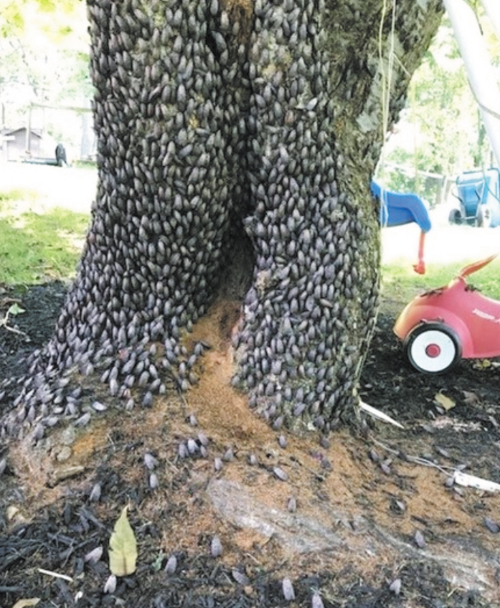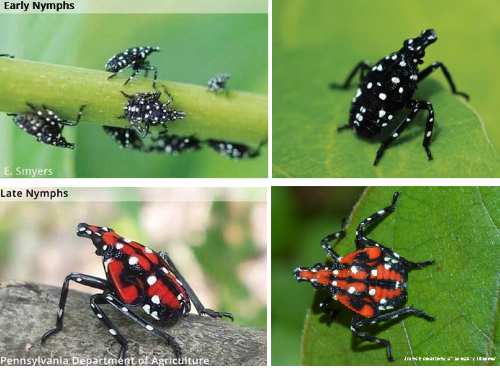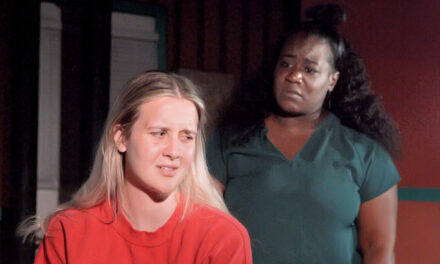By Tom Dyson, County Extension Director N.C. Cooperative Extension, Catawba County Center
My mother told me that if you don’t have anything good to say, don’t say anything. Since there is nothing good to say about the spotted lanternfly, I’m keeping silent. You will just have to read this for yourself! The spotted lanternfly showed up and was identified officially in June 2022 in Forsyth County, NC! A whole established colony of them. That’s bad news. (This is when you should stop reading, gasp, and ask… what does that mean???) What that means is that these invaders, originally from China, are getting much closer to paradise (Catawba County) with their nasty little habits.
These pests will practically cover the trunk and branches of a tree (see photo), and suck sap from the plant. Then, after using very little of the sugary liquid they take from the tree for energy, they squirt the remainder out of their bodies where it falls to the ground and on the plant like rain! It is pretty disgusting if you think about it, so don’t think about it. If you ever find yourself standing under them, just walk away, photograph them, and let us know please! The Spotted Lantern Fly first showed up in Pennsylvania in 2014, and then in 9 more states by the time 2021 ended. It is a problem for production agricultural and for ornamental woody plants in landscapes. They are particularly rough on grapevines. They are also bad news for many common fruit trees. Trees tend to survive attacks, BUT, they are weakened by the loss of nutrients, reduction of photosynthesis, and loss of the energy stored through photosynthesis. This stress can cause the trees to decline, and even fail with time.
Another issue that arises with an invasion of the spotted lanternfly is the growth of sooty mold on the plant. Sooty mold is a fungus that grows on honeydew (the sticky, clear liquid expelled by the lanternflies). Too much sooty mold makes for an ugly black looking plant, and can actually black out enough of the sun from leaves to reduce the all-important photosynthesis process. If you think you have found these insects, I suggest that you go straight to the NCDA with a report. The NC Department of Agriculture &  Consumer Services is ready to counter attack if a population is found. Reports should be sent to [email protected]. We can help you confirm that they are lanternflies if you contact us (828-465-8240), but the NCDA does the eradication! Please give us a call too, so we know if the pests of have arrived in our county! Let’s all be alert, and on guard!
Consumer Services is ready to counter attack if a population is found. Reports should be sent to [email protected]. We can help you confirm that they are lanternflies if you contact us (828-465-8240), but the NCDA does the eradication! Please give us a call too, so we know if the pests of have arrived in our county! Let’s all be alert, and on guard!
Adults clumped together on tree. Lawrence Barringer, Pennsylvania Department of Agriculture, Bugwood.org.
(Top) Early Nymphs (Bottom) Late Nymphs









